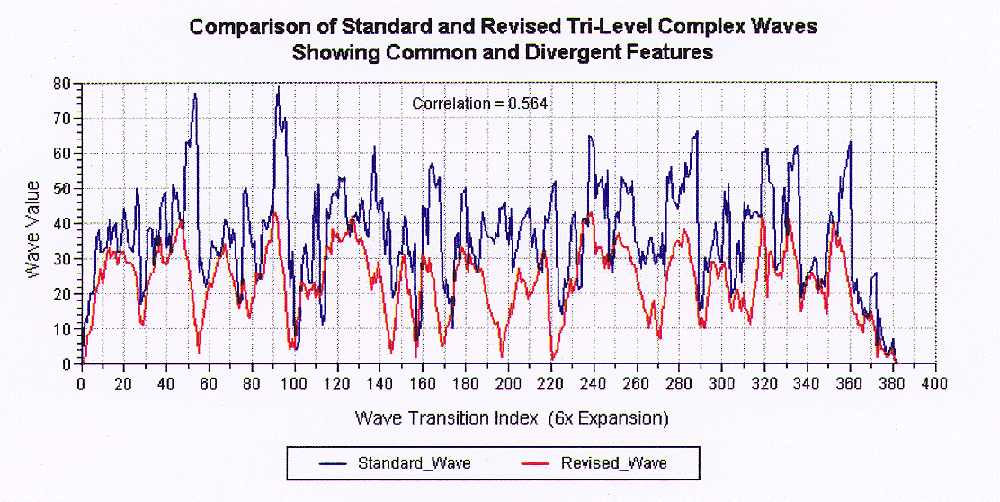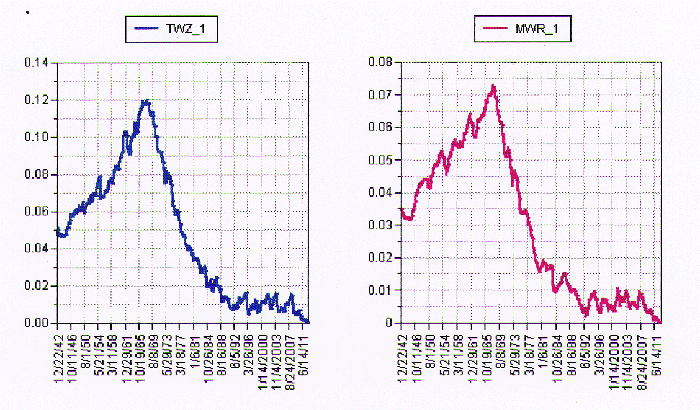
Sheliak, in carrying out his analysis of the Timewave has confirmed Watkins' findings of a procedural error and has corrected that error. His work reveals that the difference between the two versions of the Timewave differ only slightly in many cases.
Reached at his home in Hawaii for comment McKenna had this to say: "I owe a real debt of gratitude to both Watkins and John Sheliak, but especially John. His work now makes explicit every stage in the construction of the timewave, any interested mathematician can now satisfy him or herself as to the precise details of the construction of the timewave. What is exciting to me and what makes me very confident of the new formulation is the fact that we are now getting a better fit of the Novelty graphs to historical data in a number of key areas where before, with the old version, we had some problems. Just to mention two examples. The new wave, which we are calling Timewave 1, to distinguish it from Timewave 0, the new wave gives a much better picture of the ebb and flow of Novelty during the Second World War and during the century of the birth of Islam, than did the old wave. These are exciting times for Novelty Theory. I am happy to admit my error in the construction of the wave. Novelty Theory can now mature into a genuine intellectual discipline in which we can hope to see the contributions made by many people exploring the field. Many exciting discoveries now lie ahead."
Analysts concurred that the immediate challege for Novelty Theory enthusiasts would be the smooth and rapid dissemination of the new version of the Timewave and the replacement of key files in the widely distributed Timewave Zero software so that it will generate the new corrected values. Owners of Timewave Zero software should contact BlueWater Publishing to obtain info on software upgrades
Online here: the full text of John Sheliak's paper. This is the only public source of this paper as of Nov. 1, 1997.
For further information visit The Novelty Report

The Revised wave is generally more Novel than its predecessor and oscillates within a narrower range. Notice that in general both version of the wave have Novelty troughs
in the same positions.

This is the familiar view of what McKenna has referred to as "History's fractal mountain." The revised wave is very similar
in shape but its values are generally more Novel. Both illustrations above are from
John Sheliak's paper.